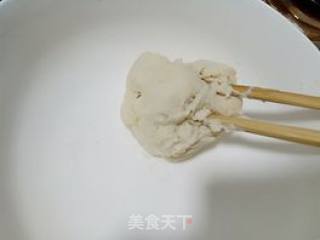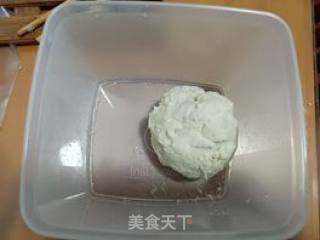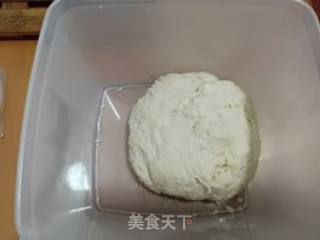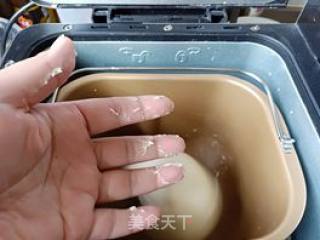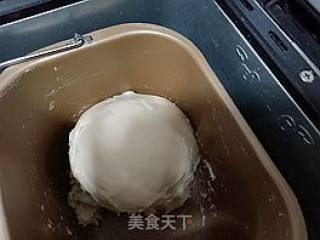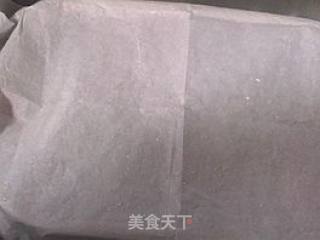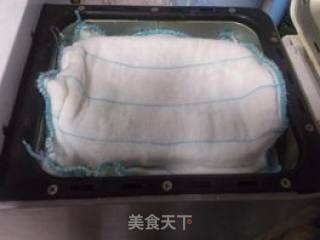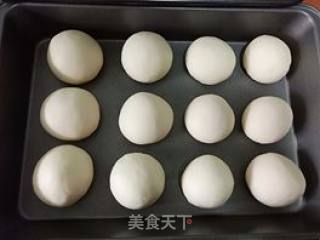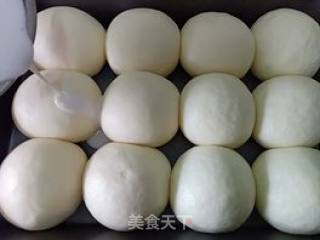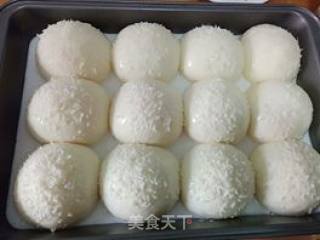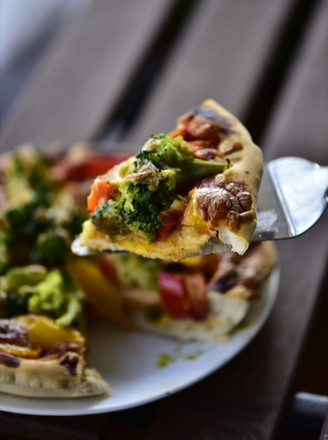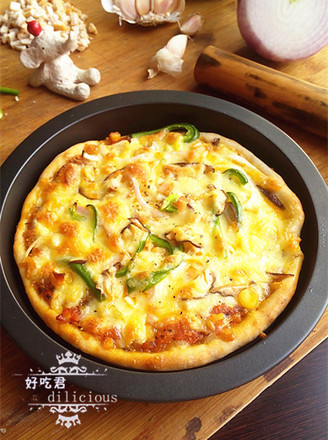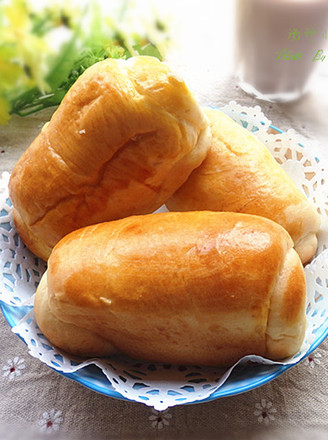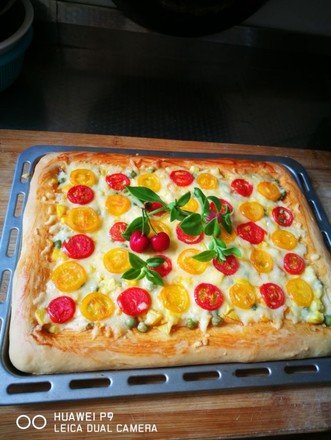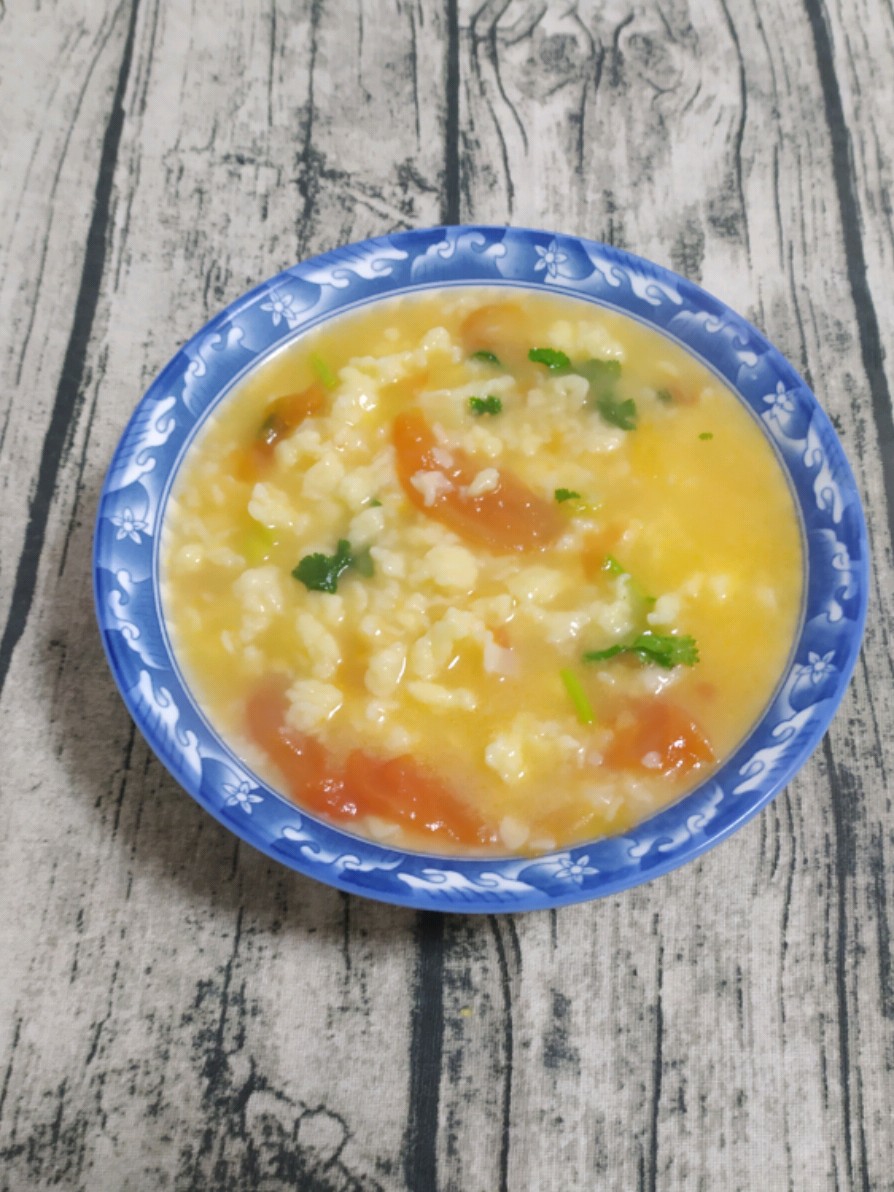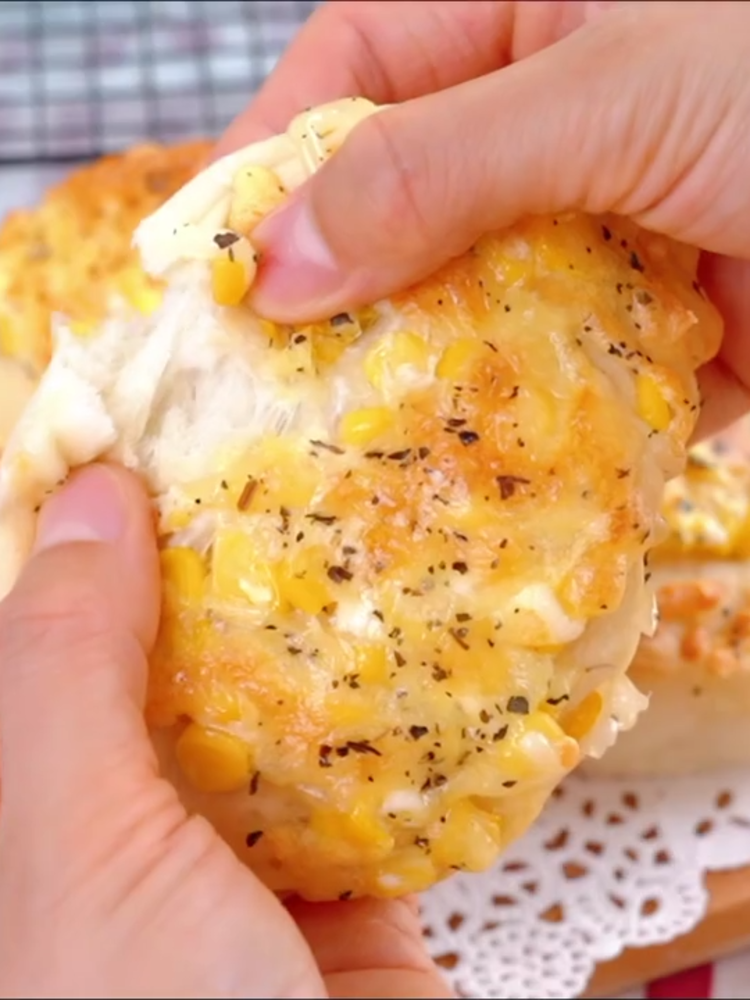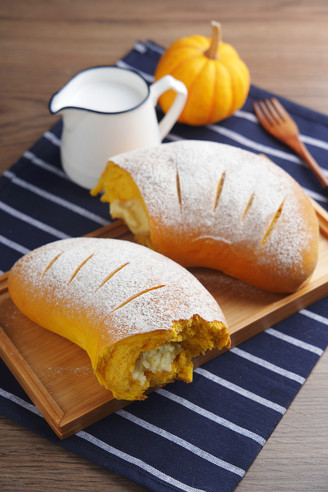Coconut Soaked Bread
1.
Prepare the middle seed one day in advance. Pour 5 grams of dry yeast into 50 grams of milk and mix, and then pour in 62 grams of high-gluten flour and mix into a dough (no need to knead it smoothly).
2.
Put it in an airtight container and put it in the refrigerator (I like to refrigerate it overnight, if I want to make it on the same day, the dough can be fermented in a warm place).
3.
The middle kind of dough fermented until it expanded to the maximum and then began to fall, with a slight depression in the center, and the inside of the dough was just like a honeycomb.
4.
Put the ingredients of the main dough (not putting coconut oil) into the bread bucket one by one (note that the salt and sugar are placed on the two opposite corners of the bread bucket), then shred the medium dough and put it in, turn on the "and" of the bread machine. "Noodle" procedure (in this step, do not put all the liquid in the table of materials, because the water absorption of flour will be different due to different brands, and the environmental humidity will also affect the water absorption of flour, so leave 10% of the liquid and wait for the dough to be kneaded. Check the softness and hardness of the dough during the dough).

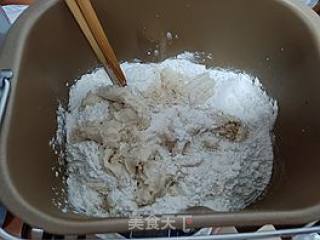
5.
When the dough is kneaded, pause the machine and knead the dough with your hands. If the dough is soft, there will be a little surface sticking to your hands, indicating that the degree of dryness and wetness (that is, softness) of the dough is appropriate. If the dough is hard, add a small amount of liquid until the dough is suitable. If the dough is wet, add a small amount of flour.
6.
Put in coconut oil at the end of the program (coconut oil must be put in the refrigerator to solidify to better knead into the dough. If there is no coconut oil, you can replace it with butter), and start the "kneading" program again.
7.
After the second "kneading" process is over, take a small piece of dough and slowly stretch it out. It is enough to pull out a large piece of film. This kind of ordinary sweet bread does not have to knead out the glove film like toast.
8.
Cover the bread bucket with a piece of baking grease paper, and flick some drops of water on the grease paper with your hands.
9.
Cover with a damp towel, then close the lid of the bread machine and wait for the dough to rise.
10.
The dough is fermented to 2~2.5 times as big, poke a hole with your fingers (the fingers should be dipped in dry flour and water to prevent sticking), the hole will not rebound or collapse.
11.
Take out the dough, flatten it and vent it, divide it into 12 equal parts, knead it and place it in a baking pan, pay attention to use a deep baking pan (at least 5 cm deep), leave a gap between each dough, and wait for the second time. Ferment. While waiting for the fermentation, mix the coconut milk and milk for the bath evenly, add sugar and stir to melt.
12.
When it is about 2 times the size, press it lightly with your hands, and it will rebound a little. Preheat the oven up and down at 180 degrees, and pour the coconut milk evenly on the surface of the dough.
13.
Sprinkle an appropriate amount of coconut paste on the surface of the dough.
14.
Put the baking pan into the middle layer of the preheated oven, bake for about 25 minutes, the surface will be golden and ready to go out of the oven.

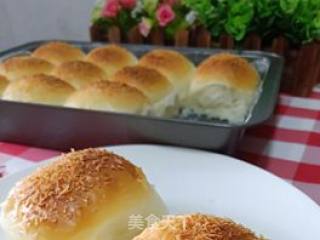
Tips:
Two clichés about making bread:
1. Do not put all the liquid in the table of materials before mixing the dough, because the brand of the flour and the environmental humidity during operation will affect the water absorption of the flour, so leave 10% of the liquid and wait for the dough to be kneaded. Check the softness and hardness of the dough during the dough and decide whether to add liquid or dry flour.
2. Each oven has different temperaments, so the temperature setting and baking time must be determined according to your own oven. If the bread is not cooked, you can gently press the surface of the bread with your hand (be careful not to burn it) immediately It's cooked when you bounce it. If the color on the surface is enough, the bread has not been baked, you can cover it with a piece of tin foil to prevent the color from becoming too dark.


